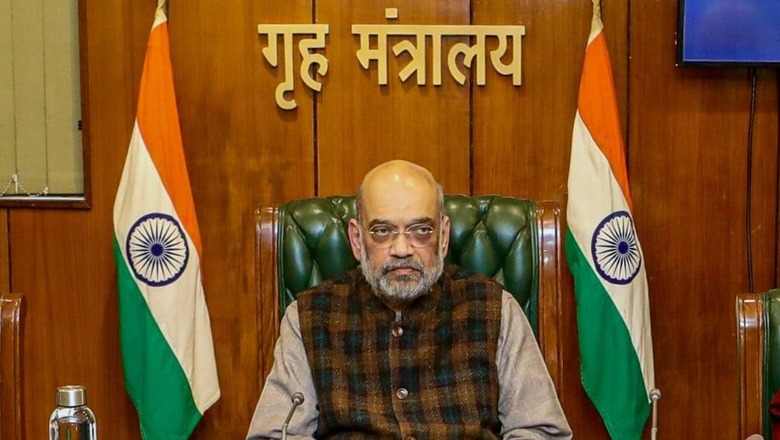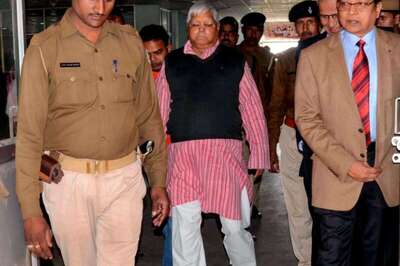
views
In January this year, at a security review meeting in Chhattisgarh, Union Home Minister Amit Shah told top officials of the security grid-intelligence gathering that a detailed roadmap for anti-Maoist operations must be drawn by all stakeholders with immediate effect. He gave the security grid three years to clear the remaining pockets of Chhattisgarh of Maoists.
Four months later, the Border Security Force (BSF) developed a specific intelligence input into actionable input and killed 29 Maoists in Kanker on Tuesday. Those eliminated include Shankar Rao, who had Rs 25 lakh reward on him, and Lalitha. Preliminary assessment suggests that entire company 4 of People’s Liberation Guerrilla Army (PLGA) battalion 1 might have been eliminated or incapacitated. This is the highest number of Maoists killed in one operation.
What also makes the operation significant is that it was a well-coordinated action between the BSF and Chhatisgarh Police’s District Reserve Guard (DRG) that ensured no casualty to the forces.
FOCUS ON INTELLIGENCE GATHERING
“Intelligence gathering is a focus area now. As more camps open and forces penetrate the hitherto untouched jungles, tip-offs are also coming more frequently than before,” a top official in the Ministry of Home Affairs (MHA) told CNN-News18.
29 Maoists killed in a major anti-Naxal operation in Chhattisgarh’s Kanker. News18’s @Arunima24 explains why this is a huge success for security forces #Chhattishgarh #Kanker #NaxalEncounter pic.twitter.com/GCkCKejjIA— News18 (@CNNnews18) April 17, 2024
Shah’s directions soon translated into formation of a high-powered committee, which had State Director General of Police (DGP), Director Generals (DG) of Central Reserve Police Force (CRPF), BSF, Indo-Tibetan Border Police (ITBP), Intelligence Bureau (IB) and other officers of the anti-Maoist grid as its members. The Home Secretary reviewed the working of this committee as it laid out real-time operational targets, timelines and pinpointed responsibilities.
“The coordination between the state and central forces has improved now,” a CRPF official told News18. He added that regular monitoring of set targets at the level of Union Home Minister and State Chief Minister has also given fresh impetus to the anti-Maoist operations.
News18 had learnt that ahead of the Lok Sabha polls, Union Home Secretary Ajay Bhalla and Director IB Tapan Deka held a second review meeting with the anti-Maoist grid, where specific discussion was held on intelligence gathering.
Shah also stressed on the need to review all inputs shared through the multi-agency center of IB and operationalise verified inputs. Implementation of the measures yielded results in Kanker on April 16 and in Bijapur on April 2, when 13 Maoists of PLGA second company were killed.
NEW CAMPS
The central forces have set up 20 camps between December 2023 and April 2024 in the Sukma-Bijapur area. The BSF has set up three new camps in Kanker and taken over five others from the ITBP. This, officials said, has reduced operational risks for parties that often travel on foot and get targeted by improvised explosive devices (IED) and snipers. “The opening of camps in Maoist territory means the distance of operations has come down significantly. We travel at least 20 kilometres less on foot now. This makes launching of operations swift and less risky,” a police officer in Raipur explained.
Official assessments suggest that the Maoist domination in Bastar is now limited to a 20 km x 20 km area spanning southern Bijapur and western Sukma. Camps in hardcore areas such as Puvarti and Elmagunda have not only reduced the operational area of Maoists, but also cut off their traditional escape routes, officials said. Puvarti is the village of dreaded Maoist commander Hidma of Battalion 1.
#BreakingNews | ‘India will be completely Naxal-free,’ says HM Amit Shah after 29 Naxals killed in Chhattisgarh. @Arunima24 with more on this#AmitShah #Chhattisgarh #Naxal pic.twitter.com/U8KpiqEqOb— News18 (@CNNnews18) April 17, 2024
CARROT AND STICK
While the Home Minister directed the forces to amp up the operations, the state government was also asked to fill the development gaps. “The Union Home Minister stressed the need for saturation coverage of Central and State government schemes in Left Wing Extremism-affected districts and utilisation of security force camps to ensure the benefits of these schemes in villages in proximate areas. He mentioned that the MHA should be flexible both in allotment of funds as also its usage in the highly LWE-affected districts in Chhattisgarh. He also highlighted the need for proactive and sensitive handling of all local grievances related to bona fide entitlements,” the MHA spokesperson said.
Directions were also given to ensure swift investigation and prosecution in Maoist-related cases. As per officials, Shah, in his review meeting, directed the State Police to fill up the remaining security gaps, ensure comprehensive investigations, closely monitor prosecution, choke finance streams and continue intelligence-led operations.
75 MAOISTS KILLED
After the Kanker encounter, the total number of Maoists killed this year is 75. In 2023, 22 Maoists were killed in the entire year. While in 2023, India lost 30 policemen during anti-Maoist operations, this year the casualty figure is only seven so far.
“Specific steps have been taken to minimise casualties,” a top MHA official explained. “Deep penetration of camps means that staying back in the jungle at night and not risking ambush after sunset is doable. Proper sanitisation, checking for planted IEDs and mines is also enforced better now,” the officer added.
Comparative figures suggest that in 2024, the security grid could surpass the total number of Maoists killed in the past five years. In 2019, 80 Maoists were eliminated, while the 2024 numbers are likely to surpass that figure. Thirty Maoists were killed in 2022 and 46 in 2021.
While Shah has set a target of three years to eliminate Naxalism, top paramilitary officials who spoke to News18 said that 2024 itself could be a decisive year for India’s anti-Maoist operations.




















Comments
0 comment